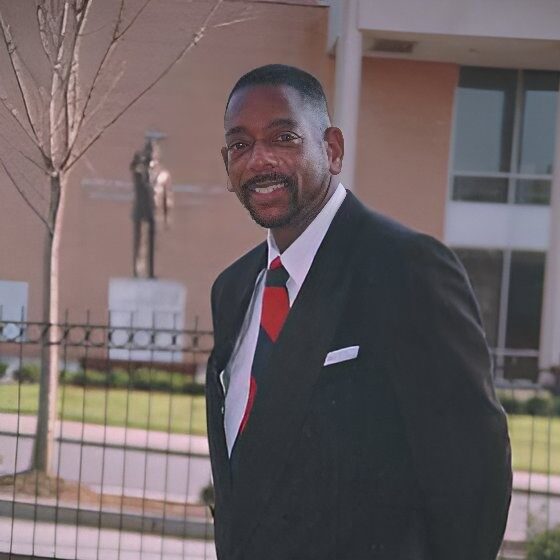
Gregory Battle
I was born on a sharecropper farm in Nashville, North Carolina. My father, Roger Battle, Sr., was a prolific producer of staple crops such as corn, cucumbers, tobacco, and cotton. His vegetable gardens covered three to four acres. My mother embodied strawberry smiles and warm hugs. She cooked us three meals a day and ensured we were well-mannered and diligently doing our schoolwork after farm chores.
My inveterate interest in mathematics began when I stood up to the numerical challenges posed by my tenth-grade algebra teacher, Mr. William B. Ennis. He had a bad habit of walking up to a student with a yardstick leveled near their head. If the student was unable to answer his math query, they received a firm tap on the head from the yardstick. Of course, I chuckled; however, my day for a duel with Mr. Ennis came after a brief introduction to negative rational exponents. I had devised an excellent study routine to keep myself well-prepared for the challenges he presented. One day, he approached me and asked, “Mr. Battle, what is one over 27 to the negative one-third power?” The whole class gasped as I answered promptly, “Three!” Mr. Ennis smiled, withdrew the yardstick, and returned to his position at the front of the classroom. I felt I had entered the “Math Octagon” and could take down Mr. Ennis anytime.
I earned an A in the algebra course and later received the Senior Math Prize in Mathematics at Northern Nash Senior High School in Rocky Mount, North Carolina. Not only did I achieve the highest average in mathematics, but my course average of 143 out of 100 is a 1973 record that has yet to be broken. As a mathematics major at Morehouse College, I was inducted into Phi Beta Kappa my junior year. My subsequent graduate studies in mathematics took place at Washington University in St. Louis, which I chose for its rigorous mathematical curriculum, having outperformed Harvard, Princeton, MIT, Purdue, and Stanford to rank number one nationally in the William Lowell Putnam Mathematical Competition. Washington University won this competition for the next five years.
My significant contribution to mathematics in the field of algebra was generalizing the Moore-Penrose matrix equations, which engineers use to transform nonlinear systems into linear systems to solve problems within them. My generalizations created algebraic ring structures from those Moore-Penrose matrix equations, and I wrote foundational theorems for the characterization of those rings. Unlike John von Neumann, I suspect my contributions will not be widely acclaimed until many years into the future. My thesis advisor, Dr. Cleon Russell Yohe, and I often giggled about how we now “own” the Moore-Penrose matrix equations. I was introduced to these equations by Dr. Alan Cline and Dr. Paul R. Julian at the National Center for Atmospheric Research in Boulder, Colorado, where I worked as a summer intern in numerical weather prediction in the Scientific Computing Division in 1976, my junior year at Morehouse College. The numerical methodology I employed involved least squares estimation (from the pseudoinverse derived from the Moore-Penrose matrix equations) to generate isothermal mapping curves on unequally spaced grids.
In my academic career, I have taught mathematics at nine HBCUs: Clark Atlanta University, Grambling State University, Hampton University, Johnson C. Smith University, Livingstone College, Morehouse College, Shaw University, Spelman College, and Texas Southern University. Most HBCUs are graduating STEM majors with only up to Precalculus II on their collegiate transcripts. This is problematic, as collegiate mathematics begins with Calculus I. Many STEM majors are graduating from these schools with only a high school mathematics education. I am keenly interested in restructuring K-12 mathematics pedagogy so that collegiate STEM majors can begin their studies with a Calculus course. One more noteworthy fact is that since my 1976 summer internship, I have participated in 33 others including 3 at different NASA installations.
Historically, I discovered in graduate school that the word “algebra” is a phonetic distortion of the name Al Jabbar, the inventor of the abstract mathematical subject. To correct this historical oversight, I propose that math majors at HBCUs should be required to take a course in the history of black mathematics.
